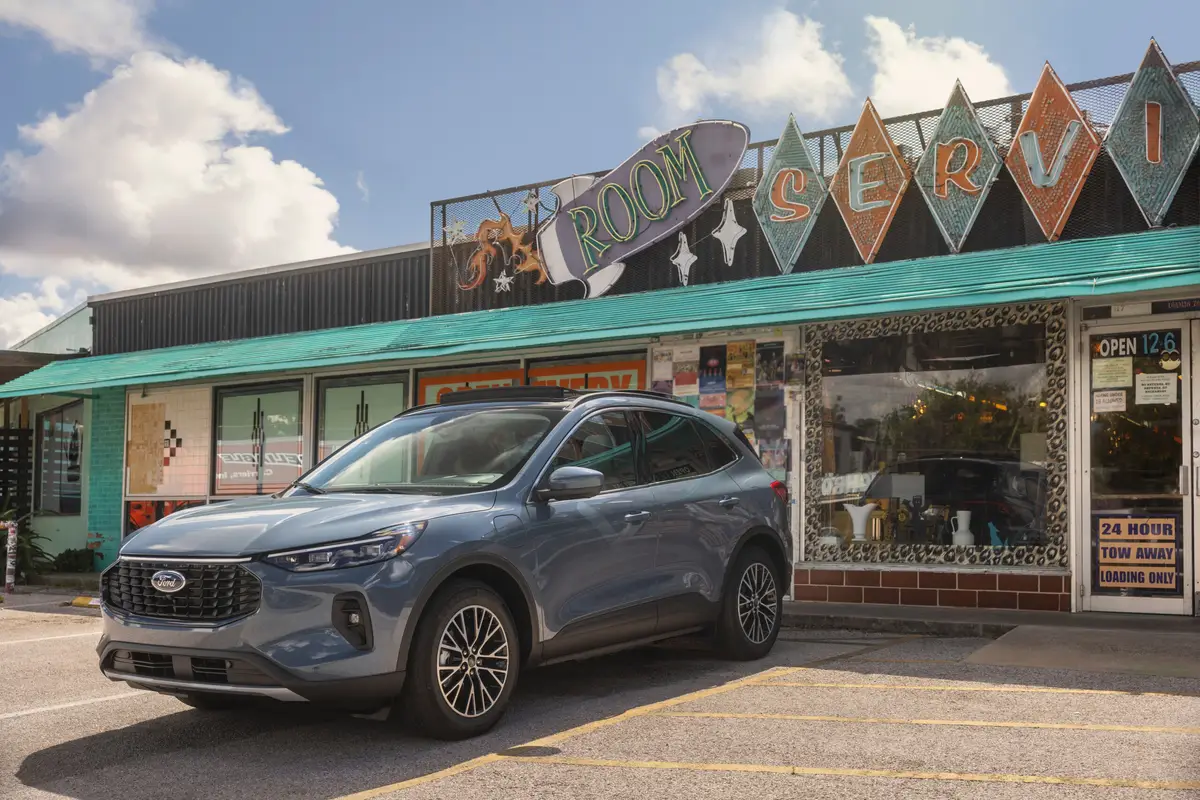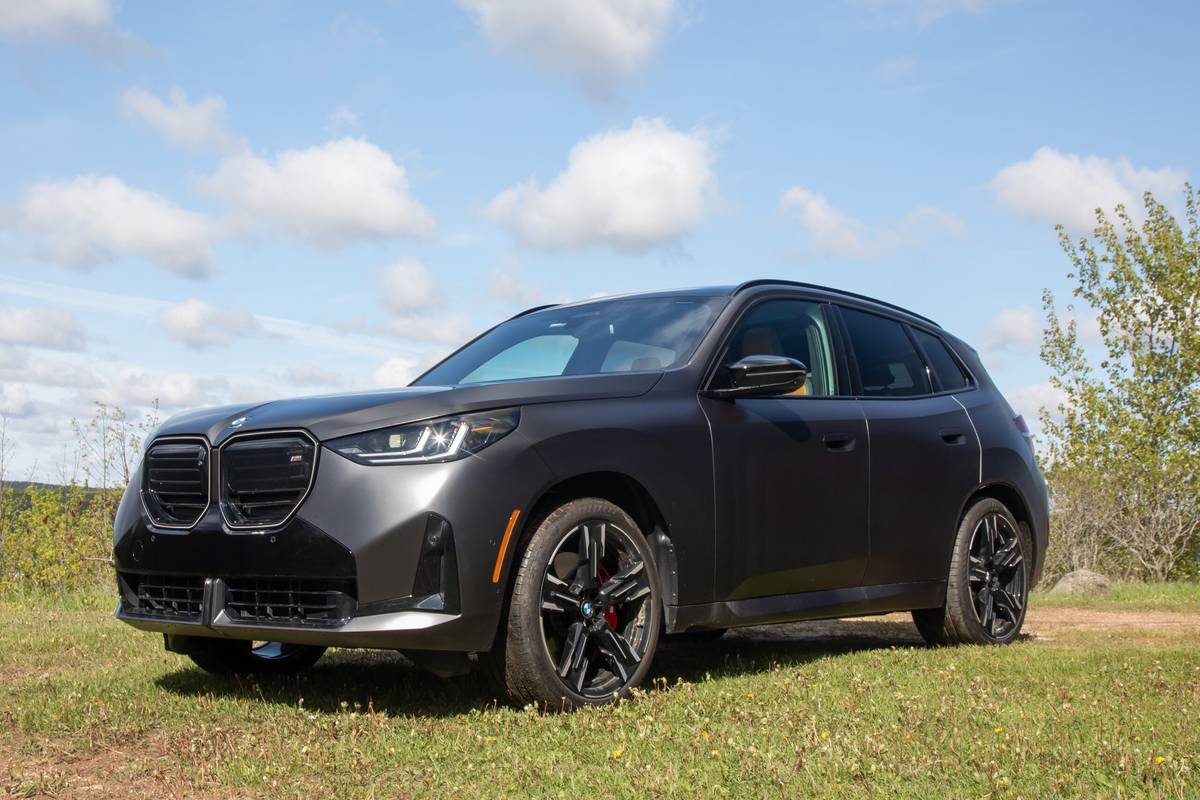washingtonpost.com's view
I should have been predisposed to like the 2000 Jaguar S-Type sedan. I’m using one of my wife’s kidneys. It works just fine. But I’m still me, and my wife, Mary Anne, is still Mary Anne. Different people. Shared parts.
Which is pretty much the case with the Jaguar S-Type and the 2000 Lincoln LS sedan. Both cars are built on the same platform. Both share a variety of parts. But no one will have problems distinguishing one from the other. The Lincoln is the Lincoln–reserved, serene, elegant, with a hint of sportiness. The Jaguar is the Jaguar–fine, sexy, seductive. But the differences are beyond cosmetic.
The Lincoln LS moves nicely, gracefully, with only a bit of the traditionally hard European driving feel. It is a wonderful compromise between American luxury sedan and foreign sports coupe.
In the Jaguar S-Type, there appears to be little compromise in the matter of ride and handling. The bias is definitely European–sporty, hard, tight in the corners with no evidence of yaw or float.
Public reaction to the two cars was different, too.
People praised the Lincoln LS for “looking European,” something akin to being a BMW from Dearborn, Mich.
People praised the Jaguar S-Type for being a Jaguar, which is what it is. That’s a major tribute to Michael Dale, the president of Jaguar Cars USA, and to the British team of Jaguar officials who insisted that every conceivable element of “Jaguarness” be retained in the new car.
Thus, it is no accident that the modern S-Type, the smallest Jag, bears a strong resemblance to Jaguar’s compact sport sedans of the 1960s, including the Mark II 3.8 and the original S-Type.
There is the new car’s sensuously elongated front end, highlighted by an elliptical waterfall grille and four round, jewel-like headlamps. The side and roof lines flow dramatically toward climax in the rear, in much the manner of the old Mark II 3.8.
The S-Type’s interior continues the theme, with a welcome change. This little Jag has comfortable seating space. Many Jaguar sedans in the ’70s and ’80s, by comparison, were space cheats. Their cabins squeezed the arms, legs and thighs of drivers and front-seat passengers. Back-seaters, to the extent that they could fit at all, frequently sat with heads bent forward to avoid contact with the ceiling, and with knees bent upward to avoid shoving them into the backs of the front seats.
The new S-Type easily accommodates four adults, though its developers say it has enough room for five. I figure, why push it? Go with four, enjoy that extra space, and forget the middle guy, who probably will wind up unhappy anyway.
Before the release of the 2000 S-Type, there was much speculation that Ford Motor Co., Jaguar’s corporate parent, would find a way to turn the thing into a Taurus or miniature Lincoln Continental. Some auto critics, I among them, complained that the rear end of a prototype S-Type looked too much like the rear end of a Ford Taurus or Contour. But after witnessing the public’s highly favorable reaction to the tested, market-ready V-8 S-Type, I must say that I was wrong. Indeed, I should have known better.
Shared parts have become the rule in product development, as well as in medicine. Shared parts need not compromise individuality. Automotive proof exists in the popularity of cars such as the S-Type/Lincoln LS, the Audi TT/Volkswagen Beetle and the Lincoln Navigator/Ford Expedition, all of which share platforms and components and are running quite well in the marketplace.
Medical proof? I’m here to write this column.
Correction: In a recent column, I misstated the number of valves in the 2000 Porsche 911 Carrera 4’s flat-six engine. It’s 24.
2000 Jaguar S-Type Sedan
Complaints: Disappointing mileage in the tested 4-liter, 281-horsepower V-8 S-Type. I was expecting 25 miles per gallon in mostly highway driving. I barely got 19 mpg, a pricey proposition with premium unleaded fuel required.
Praise: An absolutely beautiful car in terms of performance and eye appeal. Purists might balk at the idea of a Jag built on a Ford platform, but the darned thing works really well.
Head-turning quotient: Snapped necks from Virginia to New York and back again. Attendants at a garage on Manhattan’s East Side gave it special treatment. They polished it and put it up front under 24-hour guard–at no extra charge.
Ride, acceleration and handling: The original intent was to go after BMW’s 5-series in the ride and handling department. That’s a pretty high mark, and the S-Type doesn’t hit it. But it sure as heck doesn’t miss it by much, either. Ditto acceleration.
Layout: Front-engine, rear-wheel-drive.
Brakes: Vacuum-assisted four-wheel discs, vented front and rear. Anti-lock standard on all four wheels. Excellent braking on wet and dry surfaces, and in panic stops.
Engines: The test car’s 32-valve V-8 is designed to produce 281 horsepower at 6,100 rpm and 287 pound-feet of torque at 4,300 rpm. A newly developed 240-horsepower V-6 is available.
Safety: Large-volume side-impact air bags designed to prevent the head from hitting side windows and related structures in side-impact crashes; computer-operated Dynamic Stability Control, which can apply brake force individually at any one of the four wheels, improving skid prevention.
Price: Not firm at this writing. Preliminary pricing looks like $40,000.
Latest news



